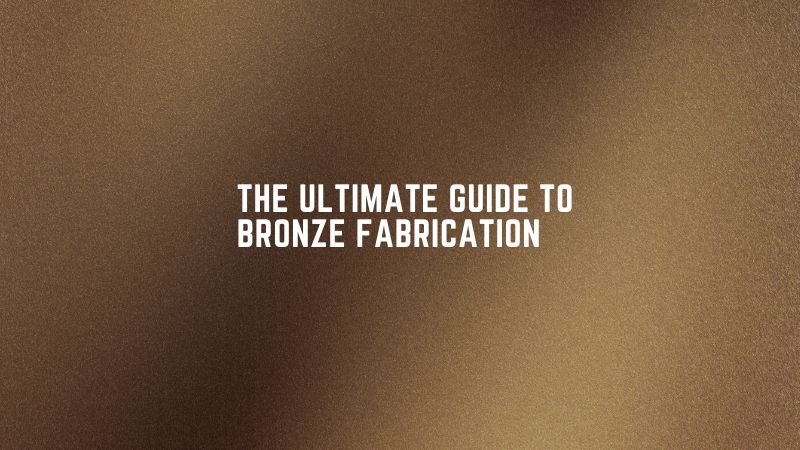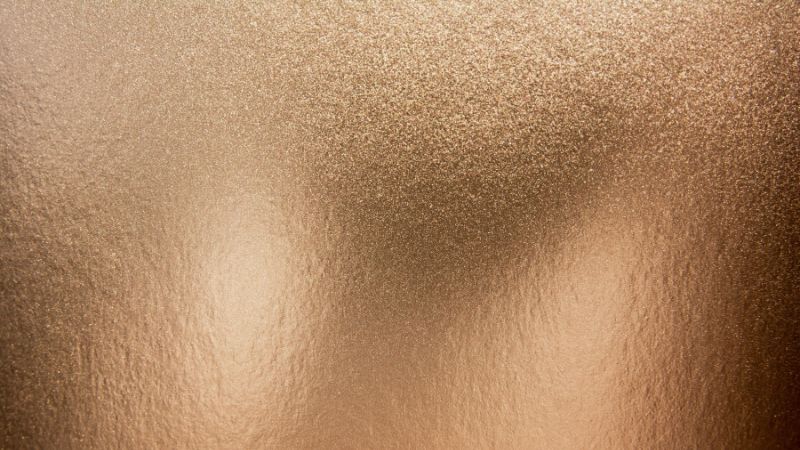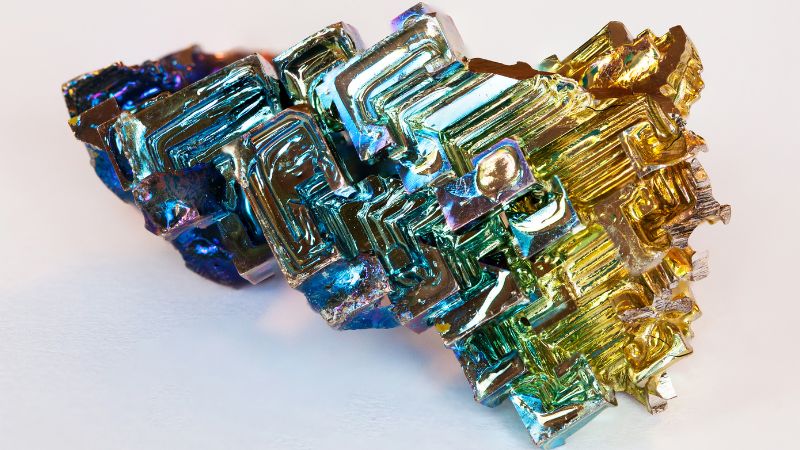
Before you fabricate bronze parts, read this guide.
It has all information that will help you choose best bronze material, decide on applications, and select the right surface finish, just to mention a few.
SO, before your next bronze fabrication process, read this guide.
Bronze Qualities Useful in Fabrication

There are many properties that make bronze a perfect choice for some sheet metal fabrication processes.
Whether you want to cut, form or weld bronze – they features making suitable for virtually all processes.
- Bronze is a ductile alloy with excellent formability and lower capacity to disintegrate under stress force compared to cast iron.
- Copper-tin alloy has non-magnetic qualities unless alloyed with materials with magnetic properties such as iron.
- Bronze does not ignite by sparking when struck and poses no danger when working with explosive or flammable material.
- Dimensional precision when fabricating bronze is high as well as a resounding surface finish.
- Bronzes have a higher density than steel and can even be less dense by adding elements such as silicon and aluminum.
- Fabricating bronze as a copper alloy is simple and it has a lower melting point compared to iron or steel. The melting point is subject to the alloying components and can reach about 950 °C.
- Bell bronze whose copper to tin ratio is 4:1 has outstanding resonant qualities making it useful in bell making.
- Oxidation in bronze is superficial resulting in an oxide or carbonate layer of copper that offers the surface buffer protection. The reinforced surface is capable of tolerating atmospheric corrosion and that induced by sea water.
- Bronzes such as bearing bronze which contains lead to about 8% exhibit low friction qualities.
- The impressive conduction property of copper as an alloying element makes bronze a good electrical and thermal conductor.
- When compared to nickel alloys, copper alloys such as bronze are cost effective.
Types of Bronze in Fabrication
There are several bronzes employed in metal fabrication containing copper, tin and other alloying elements such as zinc, silicon and manganese. Let’s look at some common options:
Aluminum Bronze

The copper content in aluminum bronze is 6% compared to aluminum’s 12 %. Aluminum bronze can also contain scant additions of manganese, iron, silicon and /or nickel.
It is suitable for custom bronze fabrication parts that require:
- High resistance to corrosion especially saline water.
- High tensile strength
- Resistance to tarnishing
Cupronickel
The nickel content in this bronze type ranges from as low as 2% to as high as 30 %.
You can use it to fabricate parts that require:
- Impressive stability at extreme temperatures
- Resistance to elemental corrosion
- Highly durable
Manganese Bronze
The manganese content in this bronze type alongside other elements such as iron, zinc, aluminum and copper is 3%.
The parts should have unique properties such as:
- Deforms rather than break upon stress application
- Resistance to shock
- Corrosion resistant
Phosphor Bronze
Contains phosphorous as a minor alloying element at about 0.35 % alongside copper at 88% and tin at about 11%. The addition of phosphorous enhances the alloy’s stiffness and resistance to wear finding use in electrical fasteners and perforated sheets.
You can use for sheet metal parts that require:
- High yield strength
- Has a fine grain structure
- Has low coefficient of friction
- Appropriate for arc welding, soldering and brazing
- Highly durable
Silicon Bronze
Contains copper, silicon and zinc as the main alloying elements and sometimes even iron, manganese and tin.
Some unique properties that make it suitable for sheet metal fabrication parts are:
- Has a smooth flow when pouring
- Impressive surface finish
- High strength quality
- Enhanced resistance to corrosion
Bismuth Bronze

This bronze type contains bismuth quantities between one and six percent finding similar use like leaded bronze.
Some unique properties of this bronze for sheet metal fabrication include:
- Highly malleable
- Great heat conduction
- Outstanding resistance to corrosion
- Polishing friendly
Uses of Bronze Fabricated Parts

Bronze fabrication includes different processes such as cutting and forming to make complete parts and for use in other products. Some of the uses of fabricated bronze parts are as follows:
i. Bronze finds use in boat construction in fabricating propellers and underwater parts thanks to its impressive corrosion resistance and toughness.
ii. Bronze’s high resonance quality makes it a common material in the fabrication of bells, cymbals and some stringed instruments.
iii. The high strength and non-sparking quality of bronze allows its use in tool making such as fabricating mallets, hammers and wrenches.
iv. The high strength of bronze allows its use in the fabrication of springs, bushings, connectors and transmission bearings.
v. The toughness, low friction and wear resistance property of bronze makes it common in machines and automobile bearings.
vi. When fabricating aesthetic structural elements, using bronze is a great choice owing to its durability and low maintenance.
Finishes Applicable in Bronze Fabrication
Surface finishes during bronze fabrication are useful in increasing surface protection and improving appearance. There are several finishes you can employ with the following finishes more common:
Several metals such as nickel and chrome can find use in plating bronze surfaces by employing electrical and electroless means. Metal plating bronze serves to increase resistance to atmospheric corrosion and wear as well as improving the surface appearance.
- Clear Coating
Bronze has a rich and colorful finish and given its high surface attributes, it stands out even without further processing. Applying a clear coat seeks to maintain this allure without altering the surface qualities by offering protection from the elements.
Design Tips when Fabricating Bronze

While fabrication of bronze is not complex, the processes involved can greatly increase production cost. Consequently, design considerations are useful in ensuring costs are low without hampering final quality.
Design-For-Manufacturing (DFM)
Designing for manufacture is necessary for cost optimization during bronze fabrication. An important principle in DFM is providing bend reliefs when undertaking sharp bending procedures of bronze to avert crack formation. You find this necessary since bronze has a tendency to work harden in this instance.
Alloy Selection
Work hardening of bronze is an issue which typically manifests in shear stress application such as bending. It is therefore necessary to select a bronze alloy with low affinity to work harden in such cases.
Limitations of Bronze during Fabrication
Sculpture bronze fabrication is not without its limitations as can be seen in the following instances:
- Most bronze alloys during cold working processes such as bending work harden making them prone to deformation.
- Extended exposure of uncoated or unplated bronze to the elements results in a patina that defaces the bronze surface.
- Furthermore, bronze is susceptible to chemical corrosion especially sulfides and chlorides.
KDMFAB Capability in Bronze Fabrication
At KDM, we help you get high quality and reliable bronze parts depending on your unique specifications. From simple to complex designs, you will get the best fabricated bronze parts.
At KDM we:
- Cut bronze sheet metal – from laser cutting, plasma to Waterjet cutting
- Forming bronze to specific shapes and size – we can bend bronze, stamp or punch
- Assemble bronze sheet metal parts through welding, riveting, etc.
Additionally, we apply suitable surface finish on fabricated bronze parts.
Conclusion
Fabricating bronze sheet metal requires choosing suitable bronze grade and metal fabrication technique. The complexity of parts will determine the bronze fabrication process and technique.
More Resources:
Bronze – Source: Wikipedia
Sheet Metal Finishing – Source: KDMFAB
Sheet Metal Fabrication – Source: KDMFAB




